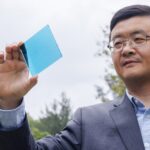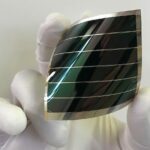Researchers from The Hong Kong Polytechnic University (PolyU) have made a groundbreaking advancement in the field of organic solar cells (OSCs), signaling a major breakthrough in the efficiency of these polymer-based solar cells. Boasting an impressive power-conversion efficiency (PCE) of 19.31%, these OSCs hold immense promise for transforming the landscape of solar energy devices and facilitating a more sustainable and environmentally friendly future.
Under the leadership of the esteemed Prof. LI Gang, the research team at PolyU adopted a novel approach to regulate the morphology of OSCs. By utilizing 1,3,5-trichlorobenzene as a crystallization regulator, they successfully enhanced the efficiency and stability of OSCs. The team’s strategy, known as non-monotonic intermediated state manipulation (ISM), played a pivotal role in manipulating the morphology of bulk-heterojunction (BHJ) OSCs. This innovative technique optimized the dynamics of crystallization and minimized non-radiative recombination loss, resulting in a significant increase in PCE.
The team’s remarkable findings, published in Nature Communications, shed light on the significance of enhancing OSC efficiency for practical applications on a global scale. Organic solar cells based on non-fullerene acceptors represent the forefront of research in the organic photovoltaics field, with a focus on material and morphology manipulation innovations. The achievement of the PolyU researchers in addressing non-radiative recombination loss and enhancing performance marks a substantial stride forward in this exciting domain.
Prof. Li emphasized the transformative impact of these breakthrough findings, foreseeing dynamic advancements in OSC research and the emergence of tremendous opportunities across various applications, including portable electronics and building-integrated photovoltaics (PVs). As OSCs continue to achieve higher PCE values, surpassing the 20% threshold and demonstrating improved stability, their unique advantages such as flexibility, transparency, stretchability, low weight, and tunable color become increasingly prominent. These attributes position OSCs as a pivotal technology for propelling the widespread adoption of solar energy worldwide.
Prof. Li’s exceptional contributions to the field of polymer solar cells have earned him the distinction of being a Highly Cited Researcher for nine consecutive years, firmly establishing his influential role in global research. His groundbreaking work on printable solar energy development commenced with the publication of his study titled “High-efficiency solution processable polymer photovoltaic cells by self-organization of polymer blends” in Nature Materials in 2005. This research marked a significant milestone for the first generation of organic photovoltaics and has been instrumental in driving advancements in solar technology ever since.
Building upon the foundation of his two-decade-long research journey, Prof. Li expressed great optimism about the future prospects of OSCs. With their impressive PCE surpassing 19% and the successful reduction of non-radiative recombination loss, the team has surpassed previous milestones in OSC efficiency. This exciting progress is expected to accelerate the widespread adoption of solar energy, contributing to a cleaner and more sustainable future for all.
The groundbreaking achievement by the research team at PolyU in achieving highly efficient organic solar cells represents a significant leap forward for solar power technology. As research continues to push the boundaries of OSC efficiency, the world moves closer to embracing solar energy as a primary source of clean and renewable power. This remarkable development propels us toward a future where we harness and utilize the abundant energy of the sun, revolutionizing the way we power our lives and paving the way for a more sustainable future.
This groundbreaking achievement by researchers at The Hong Kong Polytechnic University (PolyU) represents a significant leap forward in the efficiency of organic solar cells (OSCs). With an impressive power-conversion efficiency (PCE) of 19.31%, these polymer-based solar cells hold immense promise for revolutionizing the applications of solar energy devices. The team’s innovative approach, coupled with their ability to address non-radiative recombination loss and optimize crystallization dynamics, has propelled OSC efficiency to unprecedented heights. This remarkable progress not only accelerates the adoption of solar power on a global scale but also paves the way for a more sustainable and environmentally friendly future.








